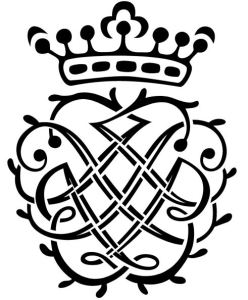Conversations
Nevermind
Alpha 235. 74’09
Quentin: Concerto a 4 parties, oeuvre XII; Quatuor; Sonata III, oeuvre XV; Sonata IV a 4 parties, oeuvre VIII; Trio Sonata 5, oeuvre X
Guillemain: Sonata no.3, 1er livre; Sonata no.4, 2eme livre
 Nevermind is a rather quirkily named group of four musicians (Anna Besson, flute, Louis Creac’h, violin, Robin Pharo, viola da gamba, Jean Rondeau, harpsichord) who met while studying at the Conservatoire Supérieur National de Paris (CNSM). They share an interest in early music, jazz and traditional music. In 2014, they won the Special Price of the Van Wassenaer Competition in Utrecht. They take their name from a quotation by the 19th century poet, Musset – “To love is what counts, never mind who the partner is! Never mind the bottle as long as it makes us drunk”. In this, their debut CD, they present the music of two little-known French composers, Jean-Baptiste Quentin (1705-1770) and Louis-Gabriel Guillemain (c1690-c1750).
Nevermind is a rather quirkily named group of four musicians (Anna Besson, flute, Louis Creac’h, violin, Robin Pharo, viola da gamba, Jean Rondeau, harpsichord) who met while studying at the Conservatoire Supérieur National de Paris (CNSM). They share an interest in early music, jazz and traditional music. In 2014, they won the Special Price of the Van Wassenaer Competition in Utrecht. They take their name from a quotation by the 19th century poet, Musset – “To love is what counts, never mind who the partner is! Never mind the bottle as long as it makes us drunk”. In this, their debut CD, they present the music of two little-known French composers, Jean-Baptiste Quentin (1705-1770) and Louis-Gabriel Guillemain (c1690-c1750).
Jean-Baptiste Quentin (c1690-c1750) was a violinist and viola player in the Académie Royale de Musique and at the Paris Opéra. He was also a regular performer at the famed musical salon of the Du Hallay’s, in the Rue de la Cerisaie. He published 19 collections of music, all seemingly intended for such intimate salon occasions. He is represented here by three complete Sonatas and an extract from a Concerto. Louis-Gabriel Guillemain (1705-1770) was born in Paris and quickly came under aristocratic patronage. He later moved Dijon where he enjoyed further encouragment from a posse of local Marquises before returning to Paris and the Chapelle et de la Cahmbre du Roi. He set himself up in some style in Versailles, leading to his financial downfall, and perhaps to his eventual murder, an event that was ruled to be suicide despite his body receiving 14 stab wounds.
Both composers were noted violinists, and were writing in the period when the French and Italians style were still being combined and compared, although in the case of Quentin and Guillemain it was the Italian style that dominated. Guillemain writes in a more exciting and extrovert style than the rather more conservative Quentin . Both represent the fascinating period of transition between the Baroque and the Rococco and early Classical style. The four young players of Nevermind portray a delightfully refreshing insight into the music, reflecting the important French concept of bon gout. Their four instruments are generally well-balanced, although occasionally the recording allows the harpsichord to dominate.
